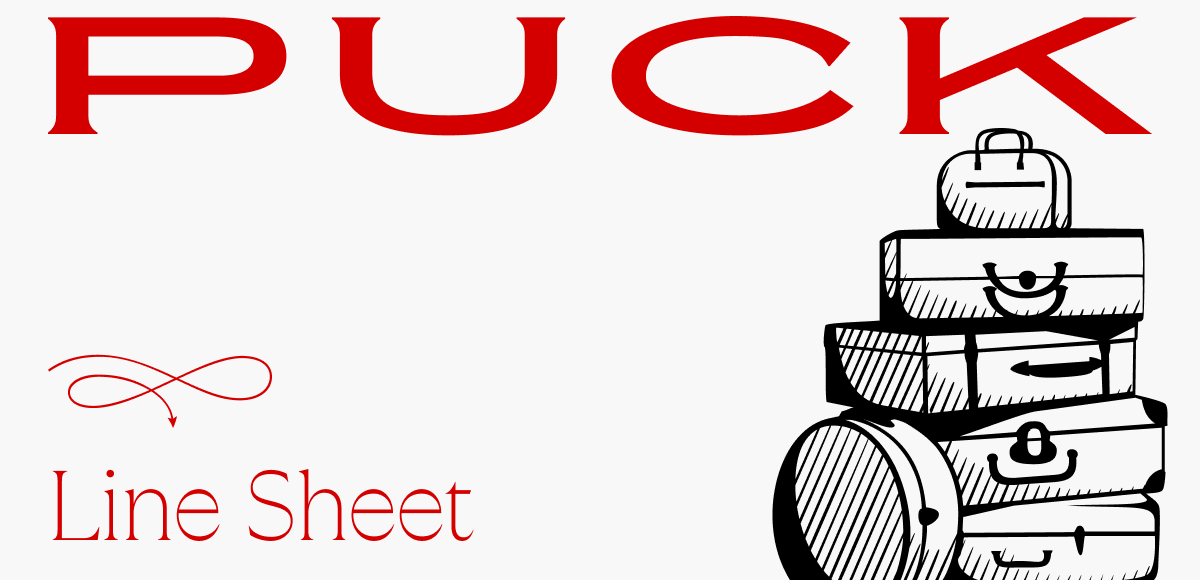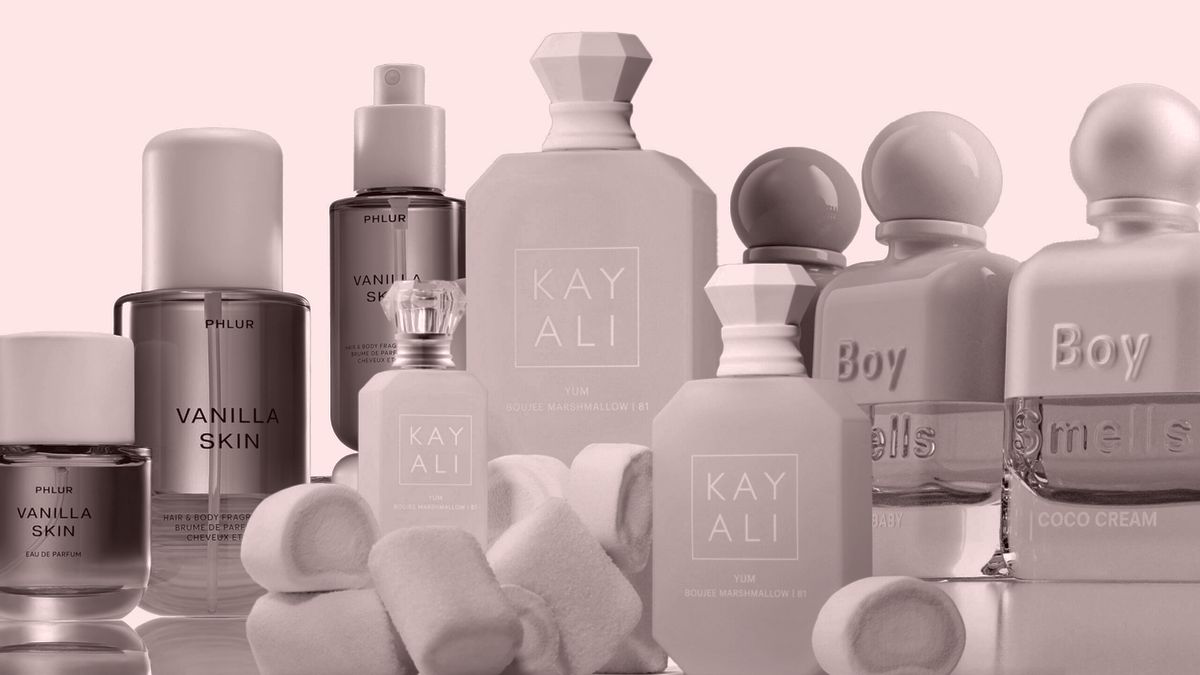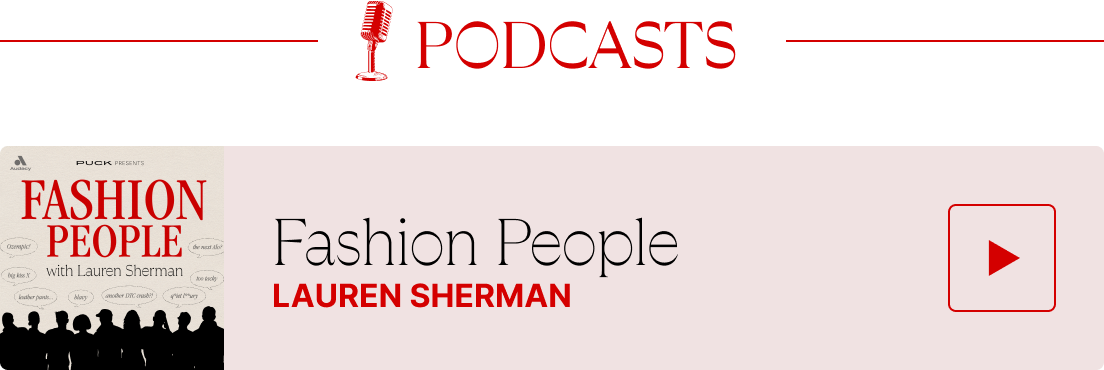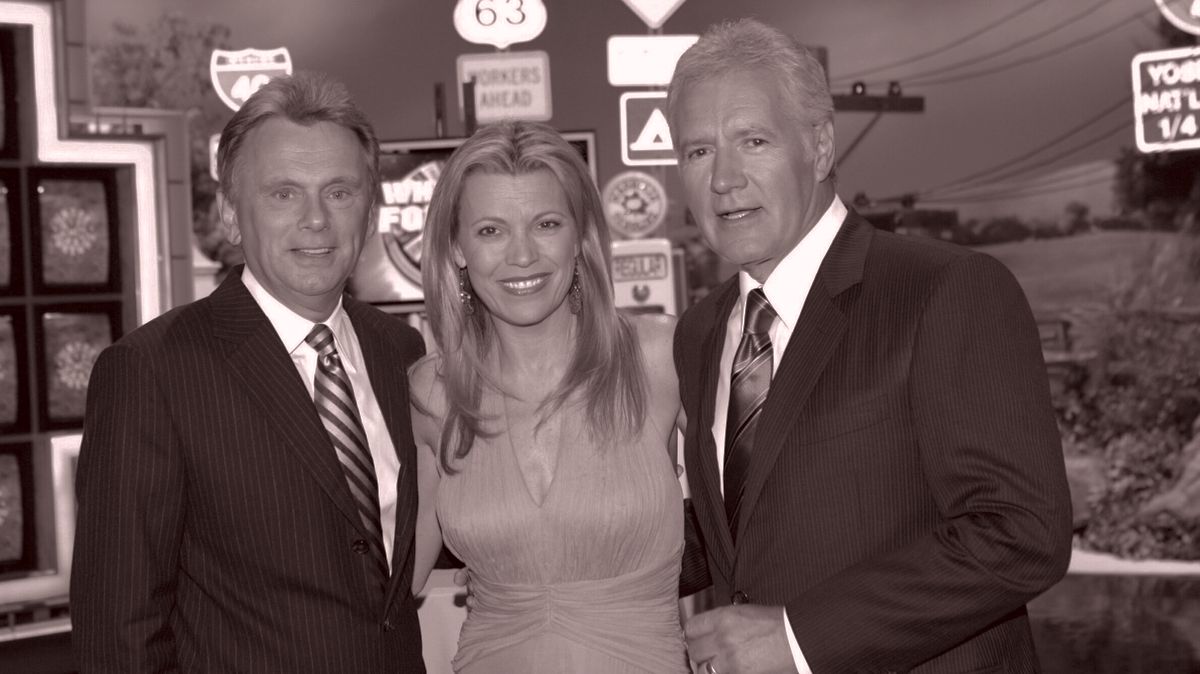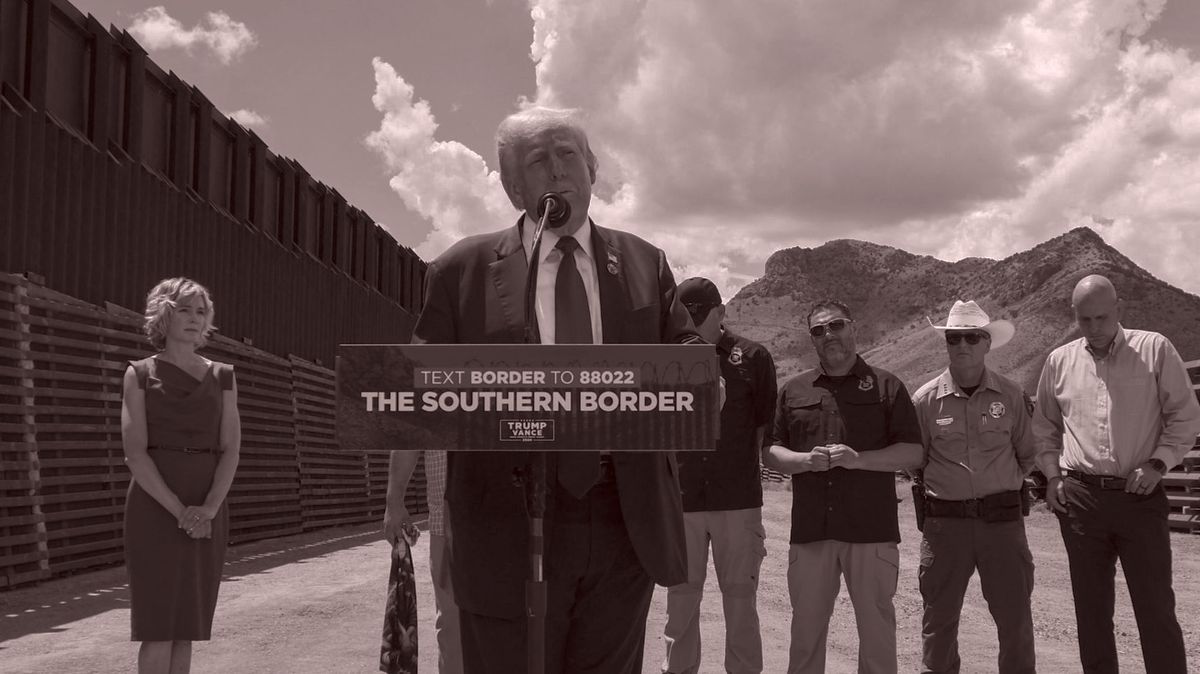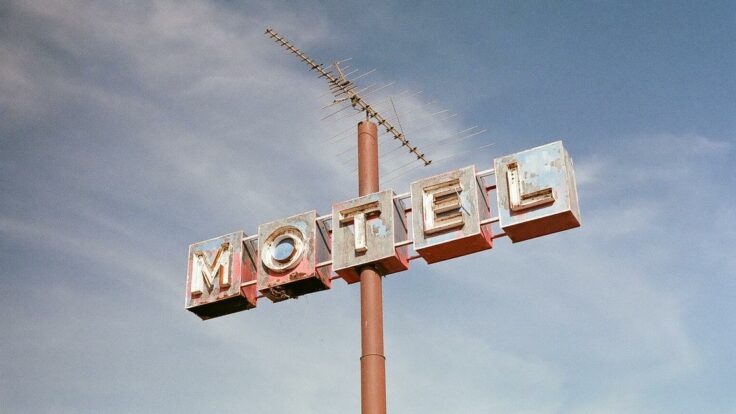Hi, and welcome back to Line Sheet. We had a great day today in Tokyo at
KidZania, an amusement park chain where kids are amused by… acting like adults. (My 4-year-old enjoyed his time role-playing as a firefighter and a flight attendant.) I would love to say this could only happen in Japan, but there are KidZanias all over the world. You know what did only happen in Japan this week, though? Maria Grazia Chiuri’s Pre-Fall collection show in Kyoto, staged just yesterday. If you’re stopping in Tokyo on your way out of the country, hit me
up?
In today’s issue, Rachel “Rachel@puck.news” Strugatz takes a look at the category that’s keeping beauty retail and M&A interesting: niche fragrances. And yes, of course I have opinions on the Vogue Met covers—namely, that it’s about time everyone acknowledged that the
Met Gala is a commercial endeavor cloaked in a fundraising effort in the interest of a cultural institution. (In this case, the two are not mutually exclusive.)
Mentioned in this issue: Sephora, Boy Smells 2.0, TikTok Shop, Oprah, LVMH, Ulta, Kayali, Glossier, Phlur, Gwyneth Paltrow, Brunello Cucinelli, and many more…
|
|
|
A MESSAGE FROM OUR SPONSOR
|
GET NOTICED
Every detail of this iconic performance SUV has been labored over to communicate poise and
presence.
EXPLORE
|
|
|
Three Things You Should Know…
|
- The
March receipts arrive: The National Retail Federation released March sales figures, which offered a sprinkling of positive news after two months of post-holiday decline. Clothing sales at fashion retailers increased ever so slightly: 0.76 percent month over month and 2.37 percent year over year. Of
course, it’s unclear whether this was a temporary bump caused by the looming threat of tariffs. Either way, we’ll be scrutinizing these figures next month, although it’s pretty fair to expect a correction.
- The Brunello bump: Brunello Cucinelli, the Italian cashmere quiet luxury staple preferred by Oprah, Gwyneth, and the Sun Valley tech bro set, announced an extremely positive first quarter. The company
booked revenue of $385 million, a 10 percent jump from the same period last year. Cucinelli is sticking to its 10 percent growth forecast through 2026, but the company did warn of potentially higher price points for the fall/winter deliveries due to—you guessed it—tariffs. (The U.S. comprises its largest market, but Europe and Asia account for nearly $250 million in sales.) Of course, virtually every fashion brand will be impacted by the tariffs, but Cucinelli is better positioned than
most.
- Rachel on the beauty M&A freeze and that Kayali deal: These are extraordinarily uncertain times, with looming tariffs presenting a unique set of challenges, but especially for beauty, where nearly everything (from components to formulas) is made outside of the U.S. But the category remains one of the most resilient consumer sectors, and tends to even excel in bad economic times. This especially applies to fragrance, which experienced
remarkable growth during the pandemic for a number of reasons: the escapist nature of scent; the adoption of “fragrance wardrobes” in lieu of a single “signature scent”; a desire for more “artisanal” scents that don’t hail from big fashion houses; and its impulse-purchase-friendly price point.
Even before the tariff situation, M&A in the sector was largely at a standstill, so I can’t see any deals happening in the immediate term, but there has been some action on the
investment side. Earlier this year, Kayali got a sizable minority investment from P.E. giant General Atlantic at a valuation I heard was somewhere in the $500 million to $700 million range, and DedCool, another Sephora brand, announced this week that investor Sandbridge Capital (Thom Browne, Ilia, Madison Reed, etcetera)
increased its minority stake.
The fact that fragrance remains an investable segment for venture, P.E., strategics, bankers, et al. bodes well for all parties. Even if a buying frenzy is still a ways off, Kayali’s story proves that at least some of these more moderately priced brands will eventually secure their big exits. —Rachel Strugatz
|
|
|
While beauty retailers face off over exclusivity for top-selling scents, TikTok Shop is
siphoning off their online sales. Could its future owners—Amazon, Larry Ellison, the OnlyFans guy, or whomever—use the tech company to upend the fragrance business?
|
|
|
Last week, an industry type posted a photo of these cute little bottles—two-toned with
different colored lacquered top halves and rose gold glass bottoms––part of what I soon realized was the “rebrand” of the fragrance and candle purveyor Boy Smells. Admittedly, I was never that impressed with the brand during its first go-round. I found its products to be interchangeable with every other Byredo-wannabe perfume and basic girl candle line. But this Boy Smells looked nothing like its predecessor. Actually, it looked good.
Boy Smells 2.0, I learned, is Sephora’s newest pet project, one of a handful of mid-tier ($100 or below) indie fragrance brands that the LVMH-owned retailer is throwing its weight behind in what’s been described to me as an all-out “fragrance war” against TikTok and Ulta Beauty. Sephora’s objectives are clear: The company must grow its fragrance business, which has always comprised a small fraction of its overall revenue, to, most importantly, give customers a reason
to choose Sephora over its rivals.
|
|
|
A MESSAGE FROM OUR SPONSOR
|
GET NOTICED
Every detail of this iconic performance SUV has been labored over to communicate poise and
presence.
EXPLORE
|
|
|
Sure, Sephora’s playing favorites approach is nothing new––the company prefers to
be a brand’s exclusive retailer and/or co-develop lines and products in partnership with founders. But the battlefield, to extend the ham-fisted metaphor, has changed dramatically. While Ulta has long been Sephora’s biggest U.S. competitor, the explosive growth of TikTok Shop over the past 18 months—Americans spend more than
$11 billion a year on the platform, according to Capital One—has made the situation more acute. And fragrance remains a priority for Sephora’s parentco. Amid this week’s news that LVMH’s beauty business declined in Q1, an executive noted that fragrance “continued to outperform”––more evidence of the category’s oft-documented resilience.
Sephora’s rivalry with TikTok is real and getting
realer, at least according to several beauty executives who offered more background on the situation. A veteran beauty C.E.O. said that while stores are more crowded than ever, Sephora is worried that TikTok Shop is cutting into its online business, though Amazon is probably partly to blame, as well. Another insider said Sephora has become so threatened by TikTok that it reportedly “bans” certain vendors from selling any of the same products on TikTok Shop, and in some cases, instructs certain
brands not to sell on TikTok Shop altogether. “It feels like TikTok is the bigger villain than Ulta,” this insider added.
And Sephora does have reason to feel threatened: Beauty is the bestselling category on TikTok Shop by a mile. In fact, the category accounts for 20 percent to 30 percent of total sales, as I learned at a recent beauty trend event co-hosted by The New
Consumer, Coefficient Capital, and the consultancy View From 32. I also learned that it took about two years for TikTok Shop’s overall sales to reach roughly $2 billion. By comparison, it took Ulta two decades to achieve the same milestone. (TikTok Shop is already far bigger in the U.S. than Sephora, but not Ulta… yet.) And while a TikTok ban is still possible, the more likely scenario is that it gets a new American owner. If Amazon is successful in their bid to buy the platform,
Sephora should really be worried.
Until then, at least, Sephora’s approach is mostly working. Kayali, Sephora’s number one fragrance brand, isn’t sold on TikTok, and neither is Glossier, a strong player in the category since entering the retailer more than two years ago. (Glossier You was Sephora’s top scent in 2023.) I heard that the relaunched Boy Smells, which also isn’t available on TikTok, hit its first-month forecast
at Sephora in just three days.
|
The Rise
of the Travel Spray
|
Of course, not every brand will fall in line. Phlur, the rising Sephora fragrance darling, also
happens to be one of TikTok Shop’s bestselling fragrance lines, especially its Vanilla Skin and Heavy Cream body mists. For Sephora, those TikTok transactions are lost sales. A person close to Sephora speculated that there are likely intertwined reasons for this: Phlur now has “too much power” as a brand, and Phlur’s Sephora contract likely predates the rise of TikTok Shop.
|
|
|
Anyway, exclusivity is only part of the strategy. Sephora has figured out that lower price
points are the key to winning market share—under $40 body mists, full-size perfumes that retail for $100 or less (in the case of Glossier or Boy Smells, price points of just $78), and travel sprays that sell for around $30 for a 10 ml. vial or mini bottle. Travel sprays now drive an outsize portion of the retailer’s overall fragrance business, a model that’s pretty unique to Sephora. “If you walk into Macy’s there aren’t huge travel spray towers. Macy’s fragrance business was built on
selling full-size bottles,” the person close to Sephora pointed out. Many higher-end lines—some too high to show up in Sephora, in fact—are still reluctant to make travel sizes because they think it devalues their brand. (For example, Kayali’s mini is priced at $29, and the smallest available size of Maison Francis Kurkdjian’s Baccarat Rouge 540 costs $210 for either a 1.2 oz. bottle or a set of three mini .37 oz. bottles.)
To me, travel sprays feel like a colossal missed opportunity for the luxury fragrance brands, which tend to take themselves too seriously. “The crux of it is that consumer behavior around fragrance is shifting to impulse purchases that are almost akin to what you normally saw in makeup,” an industry executive said. Basically, a $29 travel perfume costs the same as a lipstick, another product that famously thrives in down economies like the one we’re entering,
and shoppers are increasingly opting for the scent over the lipstick.
But more broadly, fragrance from Kayali, Phlur, Glossier, and now Boy Smells do so well, especially online, because of their elevated branding, easy price points, and the way they talk to customers on TikTok. “They all lean into an ‘impulse purchase’ mindset,” the executive added. “People have been trained for many years to see higher prices for
fragrance, so when they see that something costs $78, it feels like a steal when the super high-end, trendy stuff costs $300.”
|
Until tomorrow,
Lauren
P.S.: We are using affiliate links because we are a business. We may make a couple bucks off them.
|
|
|
Puck fashion correspondent Lauren Sherman and a rotating cast of industry insiders take you deep behind the scenes of this
multitrillion-dollar biz, from creative director switcheroos to M&A drama, D.T.C. downfalls, and magazine mishaps. Fashion People is an extension of Line Sheet, Lauren’s private email for Puck, where she tracks what’s happening beyond the press releases in fashion, beauty, and media. New episodes publish every Tuesday and Friday.
|
|
|
An essential, insider-friendly Hollywood tip sheet from Matthew Belloni, who spent 14 years in the trenches at The
Hollywood Reporter and five before that practicing entertainment law. What I’m Hearing also features veteran Hollywood journalist Kim Masters, as well as a special companion email from Eriq Gardner, focused on entertainment law, and weekly box office analysis from Scott Mendelson.
|
|
|
Need help? Review our FAQ page or contact us for assistance. For brand partnerships, email ads@puck.news.
You received this email because you signed up to receive emails from Puck, or as part of your Puck account associated with . To stop receiving this newsletter and/or manage all your email preferences, click here.
|
Puck is published by Heat Media LLC. 107 Greenwich St, New York, NY 10006
|
|
|
|
